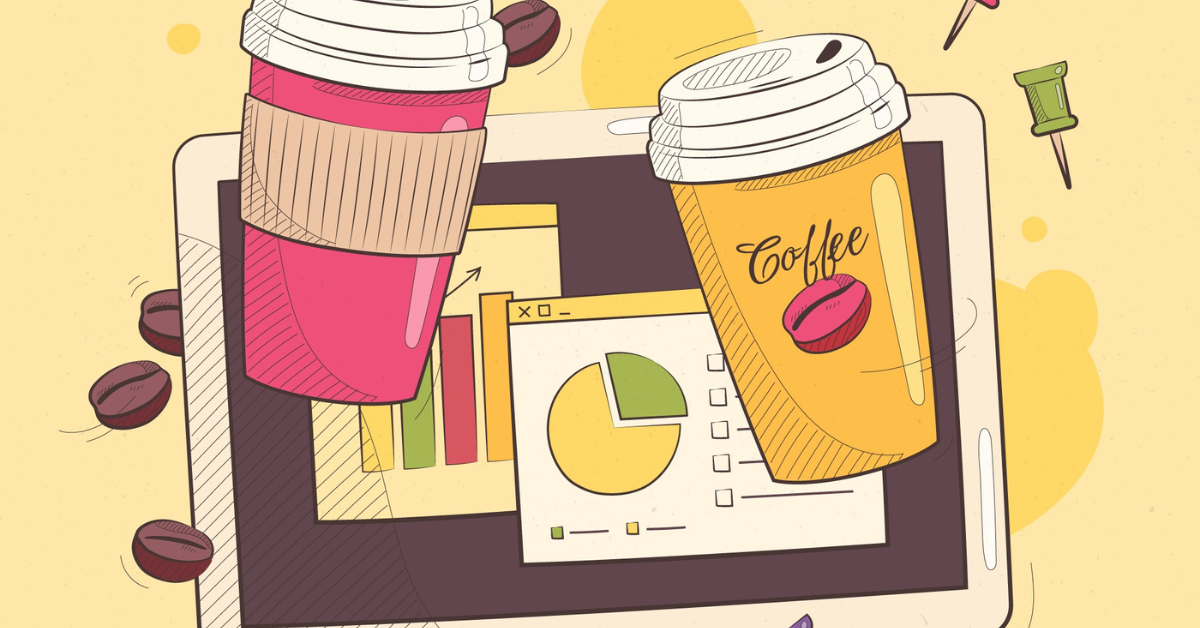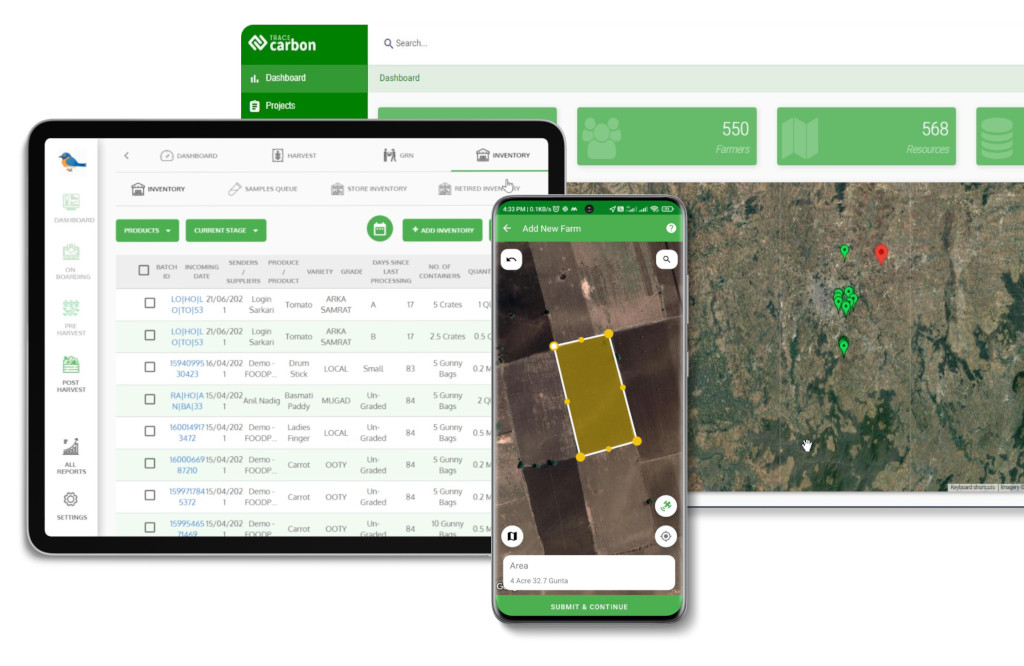Contact: +91 99725 24322 |
Menu
Menu
Quick summary: Get ahead of the EU Deforestation Regulation with this essential EUDR Coffee Buyer’s Guide. Learn what’s required, the risks, and how to stay compliant with plot-level traceability, legal sourcing, and digital DDS submission.

Coffee may power your mornings—but it’s also fueling urgent questions about land use, legality, and sustainability. As global pressure mounts to address deforestation, the EU is drawing a clear line in the soil: no product linked to deforestation will enter its market. This puts coffee—one of the world’s most widely traded commodities—directly in the EUDR spotlight. In fact, if you’re reading this EUDR coffee buyer guide, you’re likely navigating a supply chain that stretches from smallholder plots in the tropics to demanding buyers in Europe.
Coffee supply chains are fragmented, often involving thousands of smallholders, multiple intermediaries, and limited traceability systems. Many exporters and traders still lack the tools to trace beans back to the plot of land—a non-negotiable requirement under the EU Deforestation Regulation (EUDR). Because the cultivation of coffee, especially in tropical forest regions, has been tied to significant forest loss—both legal and illegal. The EU now requires proof that coffee is deforestation-free and legally produced, with traceability down to plot-level GPS coordinates.
Whether you’re a producer, trader, cooperative, or EU-based importer, EUDR compliance will soon become your license to operate. This guide will help you understand what’s changing, what’s required, and how to prepare your coffee supply chain—without compromising your market access or relationships.
Key Takeaways
EUDR can feel like a regulatory maze, especially when your supply chain spans thousands of smallholders across remote farming regions.
Under EUDR, your coffee must not be linked to any land that was deforested after December 31, 2020.
This means the plot where it was grown must still be forested or legally converted before that date.
And no, general sourcing regions aren’t enough. The EU wants exact plot-level data to prove this.
Explore how you can trace every bean back to its plot and meet EU regulations with ease.
Visit the EUDR Coffee Compliance Hub to get started.
You’re required to submit plot-level GPS coordinates—either as points (for small plots) or polygons (for larger ones). This allows authorities to check satellite imagery and confirm the land’s deforestation status.
If your coffee was grown across 250 farms, you need 250 verified geolocations.
Yes, it’s a lift. But without it, you risk non-compliance and market exclusion.
The DDS is your official declaration that your coffee is:
You’re also responsible for proving that your sourcing is legal under local law—including land tenure, labor laws, and environmental rules.
And you must conduct a risk assessment to determine whether there’s any chance your coffee came from non-compliant land.
If there’s risk?
You mitigate it—or you don’t ship it.
You’re required to maintain all documentation related to EUDR compliance for five years. That includes:
Your future audits depend on this trail. Keep it clean, digital, and version-controlled.
Key Deadlines You Can’t Ignore
Imagine you’re managing a coffee cooperative in Côte d’Ivoire.
You’re sourcing from over 500 smallholder farmers across multiple villages. Some use traditional land boundaries passed down through generations. Others lease plots informally. And almost none have official land titles or GPS-mapped coordinates.
When peak harvest hits, your team does what it always has: collect beans, record names in notebooks, and issue delivery slips by hand.
But now, with the EU Deforestation Regulation (EUDR) coming into force, a big problem is brewing:
“Where, exactly, did this coffee come from?”
“Can you prove the land hasn’t been deforested since 2020?”
“Do you have legal documentation and geolocation data for every farmer?”
Suddenly, that mountain of paper and verbal sourcing history won’t cut it.
If you can’t trace every bean to its verified origin—your shipment risks being rejected.
Without plot-level GPS, legal land-use proof, and digital farmer records, your cooperative could be flagged for:
Result: Non-compliant shipments. Lost contracts. Blocked EU market access.
TraceX equips your field teams with the digital tools to onboard every farmer, map every plot, and secure your compliance—without disrupting your collection model.
Field agents use the TraceX app (even offline) to:
TraceX lets your team:
Want to trace your coffee from plot to port—without losing visibility or control?
See how farm mapping with TraceX brings full transparency to your supply chain.
Read the case study
All farmer data, declarations, and land-use proof is:
As your shipment is prepared, TraceX pulls all associated farmer data, maps, and documents to auto-generate a DDS—ready to be submitted to the EU system.
What once felt impossible—mapping 500+ farmers across rural terrain—is now digitized, verifiable, and scalable.
You go from:
“We don’t have GPS for that plot…”
to
“Here’s the farmer, the GPS, the land declaration, and the DDS. We’re good to ship.”
Let’s say you’re a coffee exporter operating out of East Africa or Latin America. You don’t grow the beans—but you buy parchment coffee from dozens of different zones, cooperatives, and intermediaries.
Sometimes you’re sourcing from 100 farms in one region… 300 in another… and by the time you consolidate everything, your warehouse holds a blended lot in a silo or container—all prepped for the EU.
Under your current model, you may not always know exactly which farm a specific batch came from. You trust your suppliers, of course—but can you prove it?
Now the EU is asking:
“Can you show us the exact plots of land this coffee came from?”
“Is every farm legally owned and deforestation-free since 2020?”
“Have you verified land use history and mitigated all risk?”
Suddenly, your entire container of high-quality coffee is at risk—not because of quality, but because of missing traceability.
TraceX gives you end-to-end digital traceability—even when sourcing is decentralized and bulked.
You don’t need to change your aggregation model. You just need to track smarter. Here’s how:
If your beans are blended in silos, TraceX helps you declare every plot of land that contributed to that batch—not just the ones you think did.
You’re not guessing—you’re declaring in excess with confidence, as allowed by EUDR.
TraceX auto-generates a list of verified, GPS-tagged plots tied to every contributing supplier and links them to the batch.
For each source zone or cooperative:
Even when beans are mixed, you maintain the full origin trail.
Tired of losing track of batches across your supply chain?
Discover how custom Batch ID management can transform your crop traceability—from farm to final shipment.
As you prepare your export:
You’ll also see:
TraceX keeps you proactive, not reactive.
Instead of:
“We don’t know exactly which farms this came from…”
You can confidently say: “This shipment came from Farms A, B, C, and D. Here’s the GPS, legality proof, and our risk score. We’re EUDR-ready.”
No overhauling your model. Just digitizing it—with proof.
You’re an importer based in Europe.
Your suppliers ship high-grade coffee from multiple countries—Brazil, Uganda, Vietnam—and each shipment includes beans from different regions, and sometimes multiple exporters.
You’ve trusted your network for years. But now, EUDR requires you to ensure that every bag of green coffee you bring into the EU is:
Here’s where it gets tricky:
You didn’t source directly. You’re not the origin operator. But under EUDR, you’re still responsible for ensuring DDS is submitted and compliant.
A shipment from 10,000 km away could land you in regulatory hot water if a single farm in the chain is non-compliant.
TraceX acts as your compliance assurance layer, even if you’re not sourcing directly from farms.
Here’s how:
You stay compliant, proactive, and always one step ahead of regulators—without chasing down your suppliers manually.
“We didn’t source it, but we can prove every step of it.”
You lead sustainability and ESG for a specialty coffee brand.
You’ve built your sourcing network on trust—partnering with responsible exporters, promoting direct trade, and supporting regenerative practices.
But now your board asks:
“Can we prove our coffee is EUDR-compliant—farm by farm?”
And suddenly, your spreadsheets, producer testimonials, and nice-looking reports aren’t enough.
You need to validate:
TraceX becomes your central traceability command centre. Whether you work with two exporters or twenty, you get:
Now, when your team is asked:
“Is our entire coffee portfolio EUDR-compliant?”
You can say: “Yes. Here’s the platform, the plots, the proof.”

The EU Deforestation Regulation (EUDR) isn’t just a policy update—it’s a seismic shift in how global coffee is sourced, verified, and sold.
As of December 2025, large companies placing coffee on the EU market must ensure that their beans are:
And by June 2026, small and mid-sized companies must follow suit.
But here’s the thing: compliance is only the starting point.
In 2025, EUDR Compliance = Coffee Market Access
If your coffee isn’t EUDR-compliant, it doesn’t get in.
No exceptions. No grace periods. No shortcuts.
This means the days of vague sourcing claims, paper-based traceability, or mass balance models are over.
Whether you’re a farmer, aggregator, exporter, or importer—you need verifiable, geo-linked proof for every bean you ship into the EU.
Coffee-producing nations in Africa, Latin America, and Asia will need to rapidly:
The pressure is especially high for cooperatives and aggregators sourcing from fragmented, rural communities.
In 2025, exporters must:
EUDR compliance will define who gets buyer trust—and who gets left behind.
EUDR will push the industry to:
In short, digital-first, data-proof sourcing will be the new standard.
Yes, it’s a regulation. But it’s also an opportunity.
EUDR will reward brands and suppliers who:
It will raise the floor for accountability—and create a market premium for those who lead with traceability and trust. Coffee in 2025 and beyond won’t just taste good. It will need to prove it’s good—legally, ethically, and environmentally.
And the businesses who get ahead of EUDR now?
They won’t just be compliant. They’ll be competitive.
EUDR requires coffee exporters to prove that all products placed on the EU market are deforestation-free and legally sourced, with traceability down to the specific plot of land where the coffee was grown.
A DDS is a formal declaration submitted to the EU system that includes geolocation data of the source farms, legality verification, risk assessment, and proof that the coffee is deforestation-free.
You’ll need to digitize farmer profiles, capture GPS coordinates for each plot, collect legal documentation, and adopt a traceability platform that supports automated DDS generation and risk assessments.
